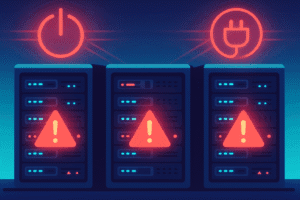How to Fix Slow Wi-Fi
A slow Wi-Fi connection can be incredibly frustrating—especially when you’re trying to work, stream, or video call. But don’t worry. If you’ve ever asked yourself how to fix slow Wi-Fi, you’re in the right place.
This guide will show you step-by-step solutions to get your internet speed back on track.
Common Causes of Slow Wi-Fi
Before jumping into the fixes, it helps to know what’s slowing your connection down:
- Too many devices connected at once
- Old or outdated router
- Interference from other electronics
- Poor router placement
- Network congestion or ISP issues
“The WiFi speed you experience is only as good as the weakest link in your setup.”
How to Fix it?
1. Restart Your Router
The oldest trick in the book, but it works. Restarting your router can clear temporary bugs and reset your connection to the ISP.
Pro tip: Unplug your router for 30 seconds, then plug it back in.
2. Move Your Router to a Central Location
Routers work best when placed in open, central locations, away from walls, microwaves, and metal objects.
Avoid putting your router in:
- A cabinet
- Behind the TV
- A corner of the house
3. Reduce the Number of Connected Devices
Each device shares the bandwidth, so too many connected gadgets (smartphones, smart TVs, gaming consoles) can slow things down.
Use your router’s admin panel to disconnect unused devices.
4. Update Router Firmware
Manufacturers often release firmware updates that improve performance and security. Check your router’s brand website or admin settings.
- For Netgear: Firmware Update Guide
- For TP-Link: Update Instructions
5. Switch to a Less Crowded Channel
Most routers use the 2.4 GHz frequency by default, which is more prone to interference. Try switching to the 5 GHz band or changing your WiFi channel manually.
6. Use an Ethernet Cable for Important Devices
Wired connections are faster and more stable. If you work from home, consider plugging in your computer directly via Ethernet.
7. Upgrade Your Router or Plan
If your router is more than 3–5 years old, it might be time for an upgrade. Consider routers with:
- WiFi 6 support
- Dual-band or tri-band technology
- Strong coverage (especially for large homes)
Also, check your internet plan—you might not be getting the speed you think you are.
Test Your Wi-Fi Speed
Use trusted tools like:
Compare the results with what your ISP promises. If it’s significantly lower, it’s time to call your provider.
Related Content
Share this post:














Post Comment